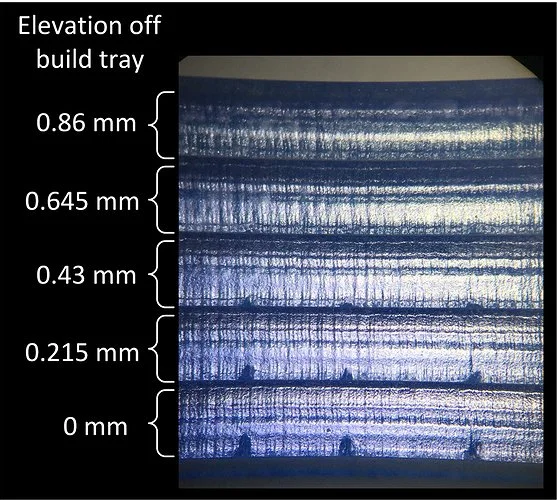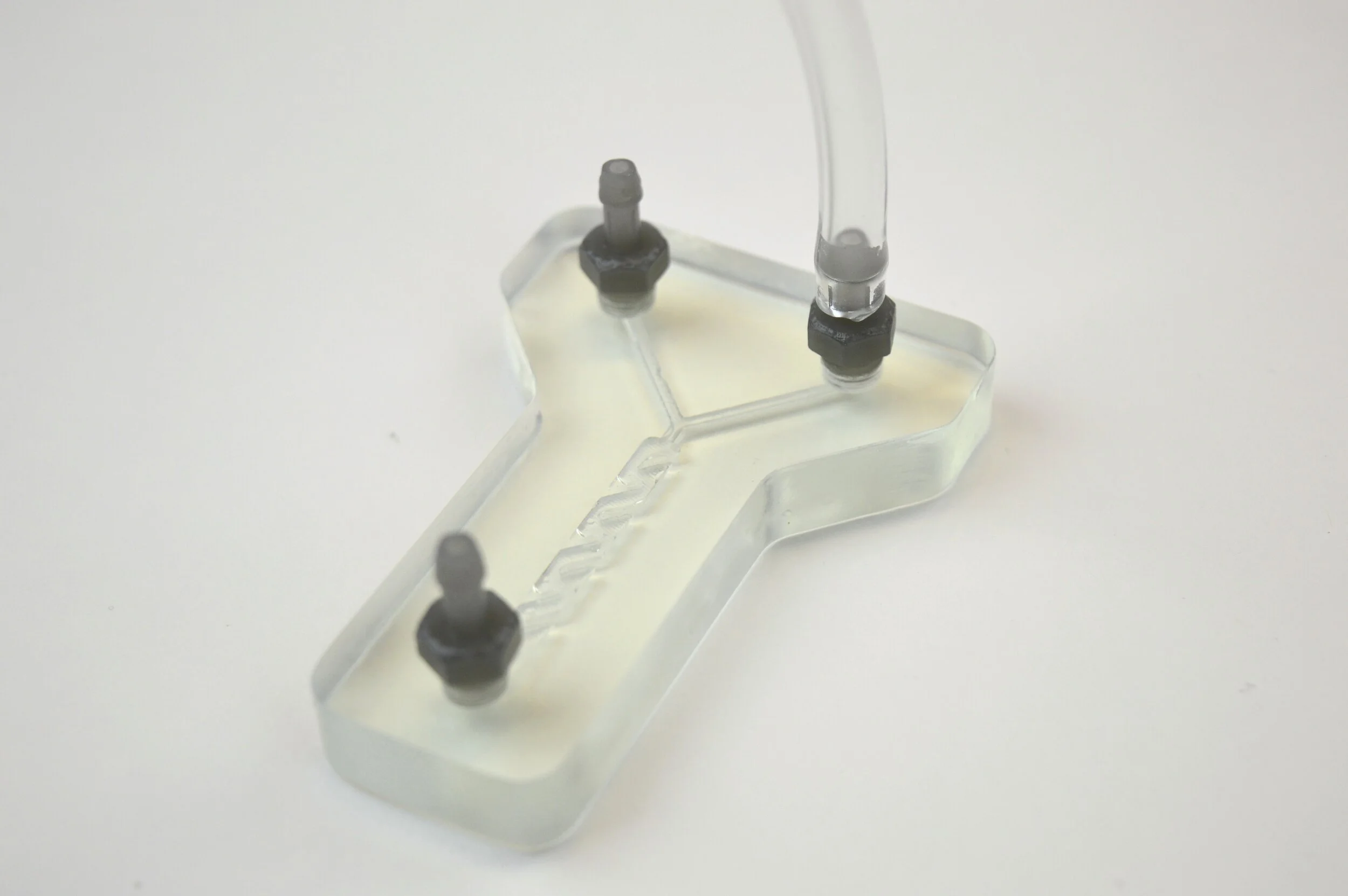In today’s post we share our findings on how much IPA can impact warping during post cure of SLA resin 3D prints and why it’s critical to dry parts more thoroughly than you think.
Read MoreWe’ve been running an extremely low cost, easy to use DIY heated chamber setup on our Bambulab X1C for around a year now with great success. The amount of warping on ABS, PC, and Nylon parts can be dramatically reduced by using a heated chamber.
Read MoreWatch our presentation on post processing, presented at the 2024 Formlabs User Summit!
Learn some useful tips & tricks to make post-processing suck less.
Read MoreIn the past we struggled with some build plates failing on Formlabs machines. The covers on the sides would pop out and no matter what you did they would continue to do so.
One of the things I love about engineering is being able to solve problems using First Principles. If we take apart a build plate and ask ourselves why this happens, we can come up with an explanation and solution.
Read MoreIn today’s post we want to share our findings on how flexible and elastic resins require significantly longer drying times than rigid resins in order to preserve dimensional accuracy.
Read MoreIn this blog we show how to build a cheap DIY fume hood in order to keep fumes from 3D printing at bay. This helps contain and filter VOCs and particulates generated with resin 3D printing and/or filament 3D printing.
Read MoreOver the past three months we’ve been printing production parts for a local medical device company as a stop gap until they got their injection mold tooling up and running. It’s pretty amazing to think that one can now rapidly scale up and do production using 3D printing in situations like this.
Read MoreFor the past three months we’ve been working on a new product. Funnily enough this wasn’t on our roadmap and was kind of an “accident” - but the amount of interest and traction led us to refine and release this next product.
For the first time ever, you can add your own logo and flair to a high quality, double sided, textured PEI plate or add your own pattern that will transfer onto parts.
Read MoreWe’ve been printing with Formlabs machines for many years now - starting from the Form 2, and now to the Form 3, Form 3B and Form 3L. These machines have been an integral part of our business and have allowed us to help hundreds of customers with their product development.
Knowing this, it’s no surprise that we have developed very specific processes internally in order to keep a tidy, clean and efficient workspace. In this post I want to share how we’ve been effortlessly removing parts from build plates. This is based on years of experience across every possible resin type, over thousands and thousands of parts.
Read MoreIt’s been around a year since we’ve launched our first product - the Camera Assisted XY Calibration Tool (or CXC for short). This is an optical tool which makes XY offset calibration on multi-extruder printers much easier, faster, and more accurate. Gone are the days of having to print annoying line patterns. In fact, our hate for the traditional line patterns is exactly why we developed the CXC for our Raise3D E2 before we brought it to life as a product for others.
Read MoreLaser cutting sometimes induces artifacts on the bottom of your material due to reflection of the laser off the bed surface and back into the workpiece. This phenomenon is known colloquially as “flashback”.
While flashback isn’t a big deal during prototyping, it can be noticeable on production parts, or any part that needs to look more polished. It’s especially visible when laser cutting thicker clear acrylic.
However, there are simple ways to solve this. As seen below, flashback can be reduced or eliminated by elevating your workpiece above the work table.
Read MoreThere’s lots of talk these days about printing tooling for short run injection molding, or printing rigid molds for silicone casting.
One unique application is low volume, flexible 3D printed molds for rigid overmolding of electronics.
In this blog post we’ll cover how we used SLA 3D printing to make flexible molds that allowed us to overmold electronics for a polar bear tracker. This was a project done in collaboration with Mistywest and you can read about the project specifics here.
Read MoreMore and more jigs and fixtures in the manufacturing and assembly space are being 3D printed. With this comes challenges in preventing static build up from damaging sensitive electronics, especially when assembling devices like lasers.
Thankfully there are an increasing number of ESD safe materials that are available. The first step to choosing the right material is understanding what Anti-Static, Static Dissipative and Conductive means.
Read MoreJust because a printer’s build volume is smaller than your designed object doesn’t mean you can’t 3D print it. Here at Ember, we’ve made lots of very large parts that were broken up into several pieces and then bonded together. There are caveats of course - your part can have weak spots along the bonding regions, the surface finish on the bonding area can look slightly different, and it requires some manual labor.
Read MoreA laser cutter is great for rapid prototyping of 2D engineering plastics such as Delrin/Acetal and Acrylic. With clever design, one can build up 3D assemblies with multiple 2D parts. Laser cutting is a much faster prototyping technique than 3D printing, thus if you can get away with 2D profiles only, it is typically the better option.
Another great usage of a laser cutter is laser engraving. Not only is laser engraving a great way to produce a high quality production looking part, but it also allows you to quickly test labeling for user design and experience. Below are some examples of the applications & materials you can engrave.
Read MorePrototyping of optically clear parts can be challenging. Traditional methods include CNC machining followed by up to hours of laborious sanding and polishing.
Low force, or zero force, Stereolithography (SLA) allows complex optically clear prototypes in days without laborious post processing. This post highlights some unique examples that we’ve done for clients.
Read More
















